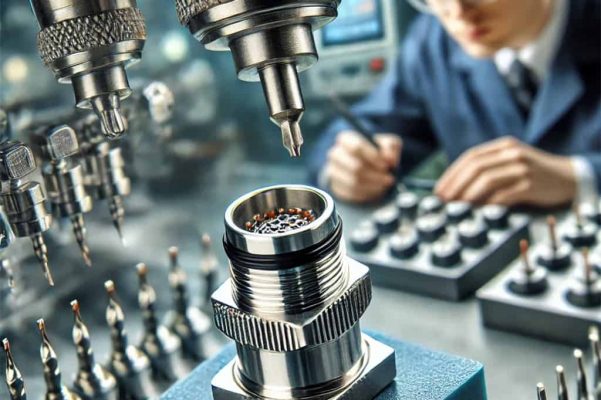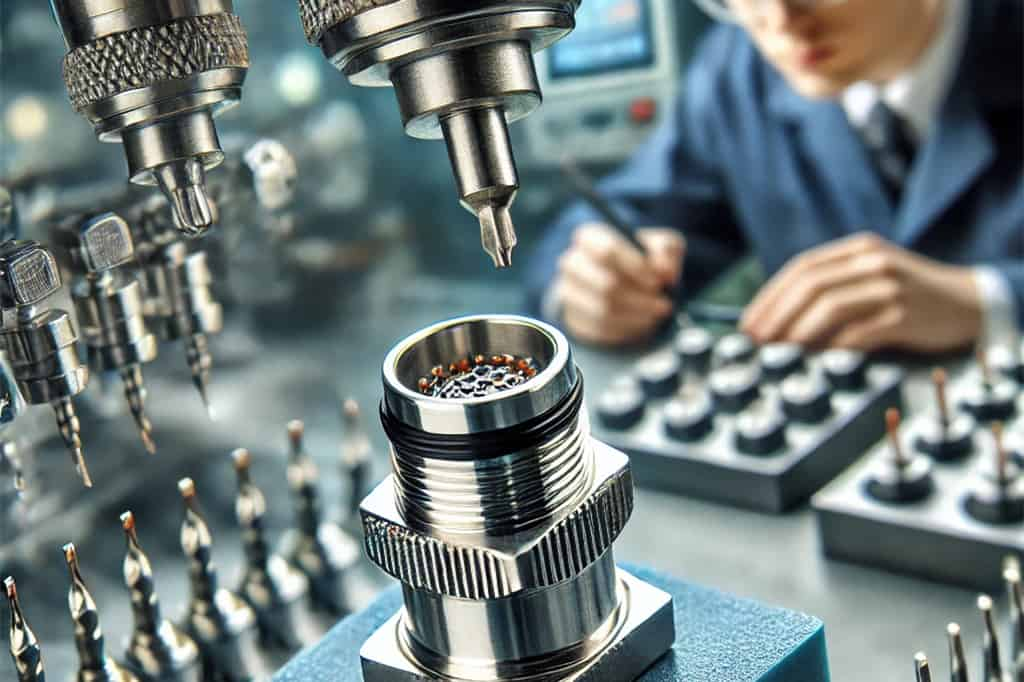In the intricate world of electronic connectors and wiring harnesses, ensuring the seamless transmission of signals and power is essential. With over 20 years of experience in the industry, we understand just how critical these small yet powerful components are. That’s why we’re passionate about the details that make a difference, especially when it comes to contact surface processing technology. At Konnra, our mission is to continuously create value for our customers by providing top-quality products and innovative solutions. In this blog, we’ll talk about the vital role that contact surface processing plays in the efficiency, reliability, and durability of electronic connectors. We’re here to share our expertise and show you how Konnra can help you achieve success in your projects.

The Importance of Contact Surface Processing
The contact surface of an electronic connector is the area where electrical signals or power are transferred between the connector and its corresponding socket. The quality of this surface is critical because it directly affects the electrical performance of the connection. Any imperfections, such as roughness or contamination, can lead to increased resistance, signal loss, or even failure of the connection. Therefore, ensuring that the contact surface is smooth, clean, and properly finished is essential for the connector to perform its intended function.
Factors Affecting Contact Surface Quality
Several factors can influence the quality of the contact surface in an electronic connector:
1. Material Selection:
The choice of material for the contact surface significantly impacts its electrical conductivity, durability, and resistance to corrosion. Common materials used include gold, silver, nickel, and copper. Each material has its own advantages and disadvantages, depending on the application.
2. Surface Roughness:
A smoother surface ensures better contact and lower electrical resistance. Surface roughness is typically measured in micrometers (µm), and the acceptable level depends on the specific application and requirements of the connector.
3. Surface Treatment:
To enhance the performance of the contact surface, various treatments such as plating, coating, or polishing are applied. These treatments help to reduce wear, prevent oxidation, and improve conductivity.
4. Environmental Conditions:
Exposure to harsh environmental conditions, such as high humidity or corrosive atmospheres, can degrade the contact surface over time. Therefore, connectors used in such environments must undergo additional surface treatments to ensure longevity.
Common Contact Surface Processing Techniques
Several processing techniques are used to achieve the desired quality and characteristics of the contact surface in electronic connectors. These techniques vary depending on the material used, the intended application, and the specific requirements of the connector.
1. Electroplating
Electroplating is one of the most widely used techniques in the processing of connector contact surfaces. This process involves depositing a thin layer of metal onto the contact surface using an electric current. Common metals used for electroplating include gold, silver, nickel, and tin.
Gold Plating: Gold is highly conductive and resistant to corrosion, making it an ideal material for high-reliability connectors. However, it is also expensive, so it is often used in thin layers.
Silver Plating: Silver has excellent conductivity but is prone to tarnishing, which can affect the performance of the connector. To mitigate this, silver is often combined with other treatments.
Nickel Plating: Nickel is used as an undercoat for gold or silver plating to enhance adhesion and provide additional corrosion resistance.
2. Physical Vapor Deposition (PVD)
Physical Vapor Deposition (PVD) is a process where a thin film of material is deposited onto the contact surface through the vaporization of solid material in a vacuum environment. PVD is used to apply coatings that are wear-resistant, corrosion-resistant, and have high hardness.
Advantages of PVD: PVD coatings are uniform and can be applied at relatively low temperatures, reducing the risk of thermal damage to the connector. They also offer excellent adhesion and durability, making them suitable for connectors used in harsh environments.
3. Chemical Vapor Deposition (CVD)
Chemical Vapor Deposition (CVD) is similar to PVD but involves a chemical reaction that occurs when gaseous precursors are introduced to the contact surface. This reaction results in the deposition of a thin film.
Applications of CVD: CVD is commonly used to apply protective coatings that enhance the thermal stability and corrosion resistance of the contact surface. It is particularly useful for connectors that operate in high-temperature environments.
4. Surface Polishing
Surface polishing is a mechanical process used to smooth the contact surface and reduce its roughness. This is typically done using abrasive materials or polishing compounds.
Importance of Polishing: Polishing is crucial for reducing contact resistance and ensuring a reliable electrical connection. It also helps to remove any surface contaminants that could interfere with the performance of the connector.
5. Laser Processing
Laser processing involves using a focused laser beam to modify the contact surface. This can include laser cutting, engraving, or texturing.
Benefits of Laser Processing: Laser processing offers high precision and can be used to create intricate patterns or textures on the contact surface. It is also a non-contact process, which means there is minimal risk of damaging the connector during processing.
Customization in Electronic Connector Machining
As the demand for more specialized and high-performance connectors grows, so does the need for electronic connector machining customization. Customization allows manufacturers to tailor the contact surface processing techniques to meet the specific requirements of the application, whether it’s for high-frequency signals, extreme environmental conditions, or miniaturized devices.
Why Customization Matters
Application-Specific Requirements: Different applications require connectors with unique characteristics. For example, aerospace connectors may need enhanced corrosion resistance and durability, while connectors for medical devices might prioritize biocompatibility and reliability.
Precision and Tolerance: Customized machining ensures that the connector meets exact specifications, with tight tolerances that are critical for high-performance applications.
Innovation and Competitive Advantage: Customizing connector machining processes allows manufacturers to innovate and offer solutions that stand out in the market, providing a competitive edge.
Examples of Customization
- Hybrid Plating Techniques:Combining different plating materials, such as gold and palladium, to achieve specific electrical or mechanical properties.
- Advanced Coatings: Applying specialized coatings, such as diamond-like carbon (DLC) or conductive polymers, to enhance performance in specific environments.
- Micro-Machining:Using advanced micro-machining techniques to create ultra-small connectors for compact electronic devices.
Conclusion
The contact surface processing technology of electronic connectors is a critical factor in determining their performance, reliability, and longevity. From electroplating to laser processing, each technique offers unique benefits that cater to different applications and requirements. As the industry continues to evolve, electronic connector machining customization will play an increasingly important role in meeting the demands of advanced electronic systems.
At the heart of these innovations is the need for precision, quality, and adaptability. By understanding the various processing techniques and their applications, manufacturers can create connectors that not only meet but exceed the expectations of their customers, ensuring a seamless and efficient connection in any electronic device.










